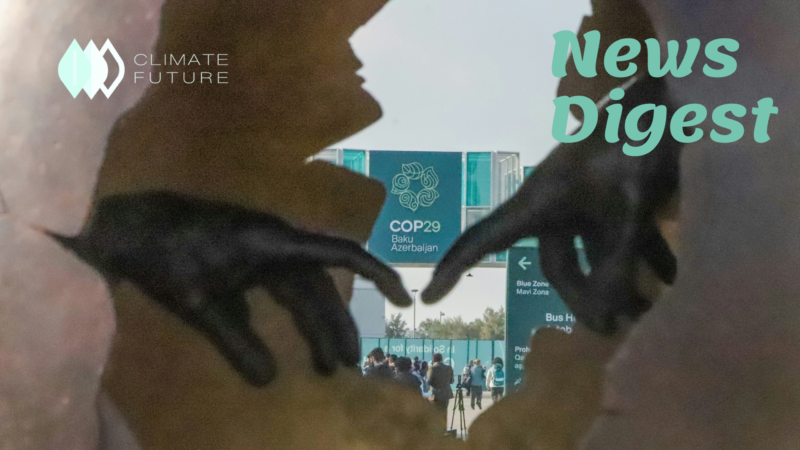Climate change risks threaten Asia’s progress on sustainable development goals

A water buffalo is seen on cracked soil in a dried-up rice field in Baliuag town, Bulacan province, north of Manila, Philippines in this file photo dated April 23, 2018. — REUTERS
A joint report from ADB, UNDP, and ESCAP demonstrates how the effects of climate change impede the advancement of SDGs in Asia-Pacific nations. Between 2010 and 2021, extreme weather events caused 213.5 million displacements in the region; Bangladesh, China, India, Pakistan, and the Philippines were the most affected. Poorer countries are disproportionately affected by climate change, which exacerbates hunger and poverty. Climate priorities are not integrated into current policy, thus radical change is required. The integration of social protection and sustainable agriculture initiatives with emissions pledges and adaption plans is one of the recommendations. Water conservation and agricultural efficiency can be increased by using methods like laser land leveling and alternate wetting and drying. Additionally prioritized are creating social protection programs that are climate resilient, encouraging employment in the natural world, improving governance of climate risk, and cultivating regional collaboration. Comprehensive efforts are needed to address the interconnected concerns of poverty, hunger, and climate change in the region, despite advances in certain areas, such as social protection in the Philippines.
World unites at UN Environment Assembly to combat ‘triple planetary crisis’

© UNICEF/Tsiory Andriantsoarana | Climate-related disasters like floods, as pictured in Madagascar, can lead to a range of health problems.
More than 7,000 delegates from 182 nations are in Nairobi for the United Nations Environment Assembly’s (UNEA-6) sixth session, which focuses on critical environmental concerns such as biodiversity loss, pollution-related fatalities, and accelerating climate change. Environmental deterioration affects everyone, but it disproportionately affects the poor and vulnerable, as noted by UNEP Executive Director Inger Andersen. UNEA was founded in 2012 and is the leading global environmental decision-making organization. It sets policies and creates worldwide environmental laws. The agenda for this year includes discussions on resolutions about the environmental effects of minerals, land degradation, dangerous pesticides, and nature-based solutions. The President of UNEA-6, Leila Benali, highlights the value of international diplomacy in tackling environmental issues around the world. Women, businesses, youth, civic society, and Indigenous Peoples are among the many stakeholders represented in the assembly. The ambitious environmental action that includes accelerating the shift to net-zero emissions, improving the quality of the air and water, and strengthening resilience to drought will be discussed by delegates in 19 resolutions. To ensure a basis for a future that is peaceful, just, and sustainable, Andersen advocates drafting strong resolutions to address the triple planetary problem.
Drawing a line in the sand as communities adapt to climate change

UN News/Daniel Dickinson | Jean Christian Lahanbitoly is a fisherman and community leader.
The effects of climate change, underdevelopment, and humanitarian crises pose serious obstacles for the town of Zanavo Fagnalenga in southern Madagascar. Agriculture is made more challenging by the “Tiomena,” a seasonal wind that is becoming stronger due to climate change. Insufficient water exacerbates agricultural challenges, prompting several farmers to relocate in pursuit of improved circumstances. Resilient sisal plants, on the other hand, stabilize soil, stop erosion, and create employment opportunities. This project is funded by the government and UNDP. Better soil conditions enable a wider variety of agricultural development, and sisal farming creates jobs that strengthen local economies. Long-term development plans are supposed to improve the region’s resilience and sustainability, and they might even expand sisal farming to neighboring villages, even if uneven rainfall is still a problem. There is some hope for a more sustainable future in Zanavo Fagnalenga and beyond despite continued challenges because of initiatives to combat environmental deterioration and promote economic resilience.
System change in Southeast Asia’s energy transition

Image: Asian Development Bank, CC BY-SA 3.0, via Flickr.
The need for a systemic change on a worldwide scale is highlighted by the energy gap in Southeast Asia, where millions of people lack access to electricity and clean cooking fuels. Even while local efforts won’t be able to meet the 2030 clean cooking targets, programs like the Zayed Sustainability Prize and Bezos Earth Fund are enabling local innovation. These community-based initiatives support pollution reduction, skill development, and economic development. Significant job creation and CO2 avoidance have already been sparked by cooperative initiatives like the Global Energy Alliance for People and Planet. Furthermore, if appropriately utilized, Southeast Asia’s potential as a vital supply of minerals might promote inclusive economic growth. The 690 million people living in the region are impacted by the energy transition, which requires international attention and cooperation, particularly in the wake of major summits like COP28. With a focus on innovation and teamwork for a sustainable future in Southeast Asia and beyond, this shift presents an unheard-of chance to uplift impoverished areas.
References
https://news.un.org/en/story/2024/02/1146967
https://news.un.org/en/story/2024/02/1146937
https://www.eco-business.com/news/system-change-in-southeast-asias-energy-transition/



